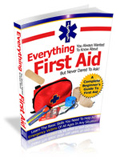Welcome to Burns Guide
Larry Burns Article
 To bookmark this article for further reading, click here.
To bookmark this article for further reading, click here.
How to Hide Cigarette Burns
Cigarette burns in carpet
Sooner or later, if you smoke or someone in your family smokes, you will get burn marks on your furniture, on your carpet, on a wooden table, or somewhere.You don’t have to live with nasty cigarette burns throughout your home. you can do something about it. Before doing any repairs to your carpet, vacuum the carpet at the site of the cigarette burns.
Next, pull up the fibers that were burned and cut them off with a razor blade or sharp knife. Then go to the edge of your carpeting and cut off some fibers from the edge of your carpet and dab them into a bit of super glue and patch the area that was burned.
After the glue has set and the fibers have welded to the carpet you will not even notice where the burn was.
If you have a large burn or multiple burns in your carpet you may want to try another approach. You can buy a kit to patch your carpet. The kit includes a cookie cutter type of tool that cuts carpet. You cut the spot out of your carpet with the cookie cutter tool.
Next cut a piece of self adhesive seam tape to the area that you have just cut the hole. Next go to a closet and use the same cookie cutter tool to cut out a piece of carpet to fit where the burn was. Fit the new piece of carpet into the hole and press down until it is firmly adhered.
Next take a comb and blend all the fibers together. no one looking at your carpet would ever know that it ever had cigarette burns.
Cigarette burns on a wood table
Minor burns can be removed by rubbing steel wool gently over the spot until the burn mark is removed and then rub the area with furniture polish that has scratch concealing properties in it to wax the area.If the burn mark is a deeper one, you will need to use 60-grit sandpaper to remove the cigarette burns. Once the burn mark has been lifted use a finger grade of sandpaper and re-sand the area where the burn was. Blend in furniture polish to conceal the blemish.
Another way to get rid of cigarette burns on a wooden table is to take equal parts of vinegar and baking soda to make a paste.
Rub the paste into the cigarette burns and let them set for a few minutes, and then use a pencil eraser to rub away the burn marks. Then clean the table and dry it. Apply a stain to patch the area with a q-tip.
It may take more than one coat to get the area to blend perfectly.
Cigarette burns on leather or vinyl
Burns on leather or vinyl upholstery can be repaired with a kit.You can buy repair kits on line. You follow the directions on the package. Always start with a clean surface, and then apply the vinyl finish compound.
The kits have everything you need to do the repair. The vinyl repair will work on leather jackets too.


